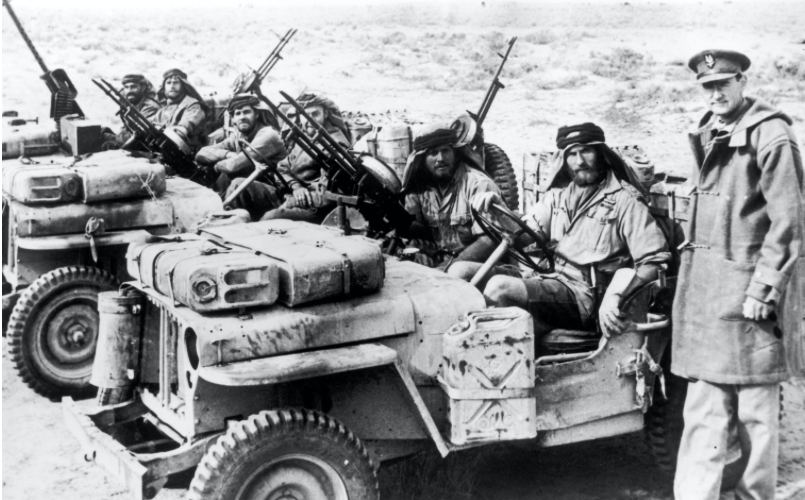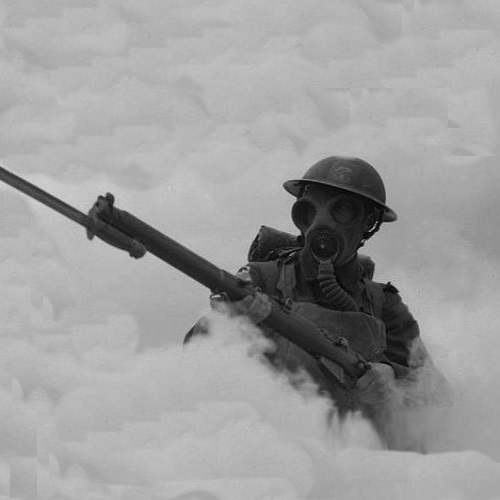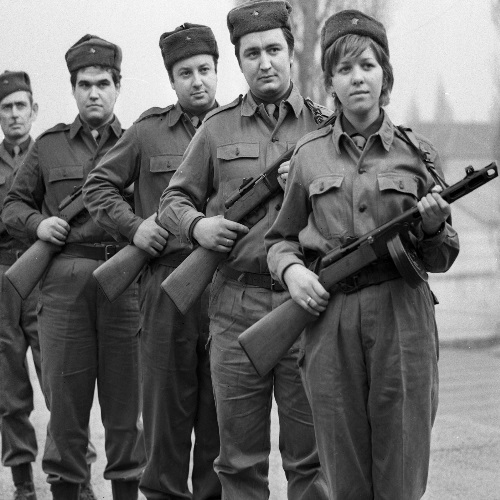The Lewis gun had a very iconic barrel shroud and a top feeding drum magazine. So much so that almost everyone would recognize it even if they aren’t interested in firearms. This may be assisted by its appearance as a stormtrooper weapon in the Star Wars films. It was often equipped with a biopod if it wasn’t mounted on a plane or vehicle. When it was mounted on a plane it was often outfitted without the barrel shroud because it wasn’t needed to cool off the barrel. The wind and altitude were enough to keep the barrel cool. This versatility helped make it one of the most significant firearms in history. Furthermore, its top feeding round magazine was one of its most recognizable features. The Lewis Gun helped to set the stage for the necessity of magazine fed light machine guns and forever changed modern warfare.

Lewis Machine Gun
The Lewis Gun was invented in the U.S. by Isaac Newton Lewis in 1911. It was in between conflicts and the US wasn’t interested in investing in a new magazine fed machine gun. After getting fed up with the U.S. military Mr. Lewis took his design across the Atlantic where it was adopted by the British Armed Forces. It was one of the first magazine fed light machine guns that was actually successful.
Unlike the American adopted French magazine fed model Chauchat light machine gun, which was an utter failure and was replaced by the BAR. It was chambered in the British .303 round and was approved for service in 1915. The World War 1 Lewis Gun was first used by Belgian Army forces while defending Namur and was used by British Army forces early in 1916 as a replacement for the heavier Vickers machine gun. The Lewis gun was more expensive to produce than the Vickers, but could be produced faster.

The issue with the Lewis gun in WWI combat was that it wasn’t an ideal platform for being fired for extended periods of time. The Vickers, Maxim, and Browning M1917 machine guns were water cooled and could be fired over long periods of time without the barrels overheating. This was an issue in the first World War because of poor battlefield tactics used by military brass. They would send wave after wave of their troops into machine gun fire to try and overwhelm entrenched enemy troops. Which, more often than not, failed and would cost thousands of lives. Each side took turns doing this, marching in lines into machine gun fire for extended periods of time, hoping their numbers could over power the enemy defenses. Which by the end of the war costs the lives of 7-8 million brave soldiers in combat related deaths.

Battlefield tactics obviously changed which made water cooled machine guns unnecessary. The Lewis gun was not water cooled and could fire 12 drums before being too hot to handle. This was not ideal for use as a defensive weapon in the trenches. Its lightweight and mobility made it well suited for going over the top. Going over the top was a term used in the First World War to describe leaving your trench, entering no man’s land (the area between allied and central powers trenches), and attempting an offensive maneuver to take ground. The Lewis Light Machine Gun also saw success mounted on airplanes. It has the unique distinction of being the first machine gun fired from the air. Oddly enough, this was was accomplished during peacetime from a Wright Model B plane in 1912.

The Lewis Light Machine Gun became a staple on aircraft during the first World War, although it wasn’t without issue. The propeller planes of the first World War had their weapons mounted behind the propeller. Aircraft following the first World War mounted their weapons on the wings. However, during the first World War they initially fixed the problem of shooting their own propellers with a small device that would synchronize the machine gun and the propeller, but the device didn’t work with the Lewis Gun because it has an open bolt unlike the other machine guns which used closed bolts.
By World War II, the Lewis Gun was replaced by the Bren gun by the majority of British forces, however, it still saw a lot of action around the world. It was very popular as an anti aircraft weapon and was often mounted side by side. This is where the iconic image of the SAS soldiers in north Africa driving jeeps mounted with side by side Lewis Guns through the desert, which were later swapped for the Vickers K machine gun that had a higher rate of fire. The Vickers K also had a top feeding drum, but was without the iconic barrel shroud of the Lewis gun. The Lewis Gun was used extensively by the British Home Guard, New Zealand, and Australian forces in the Pacific theater. It took down more low flying aircraft than any other weapons system while protecting Britain from Axis air attacks.

Significance of the Lewis LMG
The Lewis LMG was a significant weapon, that is why so many people recognize it. In fact, it’s probably one of history’s most influential weapons. However, many argue that its significance hasn’t been completely felt yet. I believe more countries will be converting their light machine guns to magazine fed instead of belt fed light machine guns. The lewis gun was the first successful attempt at this. Although magazine fed LMG have a slower rate of fire, over the course of a battle they will have a higher rate of fire when you take into account reload time and their reliability. The Russian military has already adopted a magazine fed light machine gun in the RPK. The World War 1 Lewis gun also helped several Allied countries defeat the central powers. The Lewis gun also helped to defend mainland UK from German air attacks during the second world war, North Africa, and was influential in the Pacific theater. The Japanese even copied the Lewis gun in their type 92 machine gun. It’s an important firearm in history and its influence hasn’t fully been felt in military firearms.
Don’t miss our other WW1 Gun Reviews: The Lee-Enfield and Mosin-Nagant



what is the barrel rate of twist of the Lewis mg